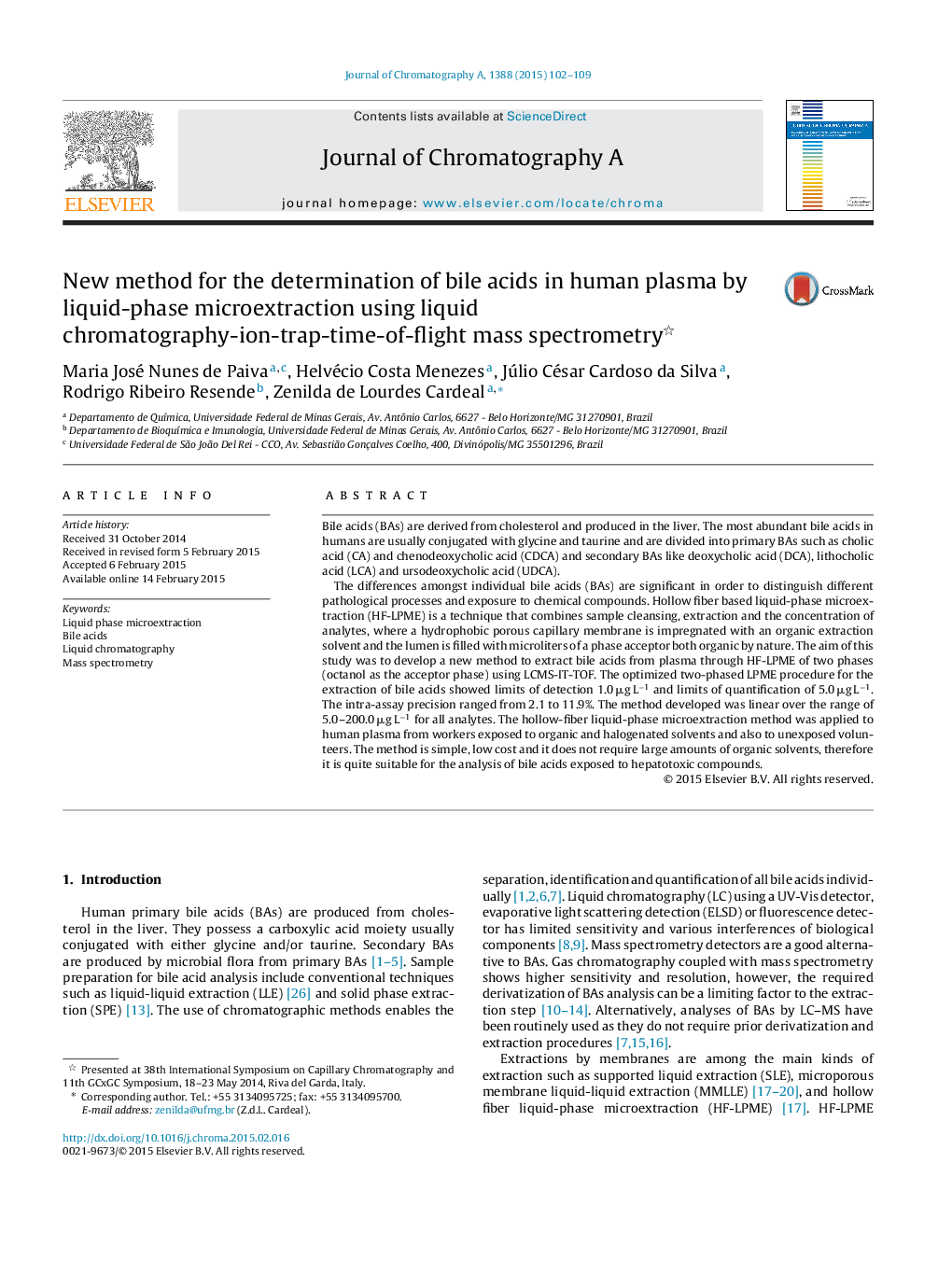| کد مقاله | کد نشریه | سال انتشار | مقاله انگلیسی | نسخه تمام متن |
|---|---|---|---|---|
| 1201895 | 1493538 | 2015 | 8 صفحه PDF | دانلود رایگان |
• A novel LPME-LCMS-IT-TOF method was first established.
• Bile acids are produced in the liver and present in low concentrations in human plasma.
• The changed values of bile acids in biological fluids can be associated with liver diseases.
• Liquid phase microextraction was used to analyze bile acids in plasma.
• The method was applied in sample of human plasma of workers exposed to solvents.
Bile acids (BAs) are derived from cholesterol and produced in the liver. The most abundant bile acids in humans are usually conjugated with glycine and taurine and are divided into primary BAs such as cholic acid (CA) and chenodeoxycholic acid (CDCA) and secondary BAs like deoxycholic acid (DCA), lithocholic acid (LCA) and ursodeoxycholic acid (UDCA).The differences amongst individual bile acids (BAs) are significant in order to distinguish different pathological processes and exposure to chemical compounds. Hollow fiber based liquid-phase microextraction (HF-LPME) is a technique that combines sample cleansing, extraction and the concentration of analytes, where a hydrophobic porous capillary membrane is impregnated with an organic extraction solvent and the lumen is filled with microliters of a phase acceptor both organic by nature. The aim of this study was to develop a new method to extract bile acids from plasma through HF-LPME of two phases (octanol as the acceptor phase) using LCMS-IT-TOF. The optimized two-phased LPME procedure for the extraction of bile acids showed limits of detection 1.0 μg L−1 and limits of quantification of 5.0 μg L−1. The intra-assay precision ranged from 2.1 to 11.9%. The method developed was linear over the range of 5.0–200.0 μg L−1 for all analytes. The hollow-fiber liquid-phase microextraction method was applied to human plasma from workers exposed to organic and halogenated solvents and also to unexposed volunteers. The method is simple, low cost and it does not require large amounts of organic solvents, therefore it is quite suitable for the analysis of bile acids exposed to hepatotoxic compounds.
Journal: Journal of Chromatography A - Volume 1388, 3 April 2015, Pages 102–109
